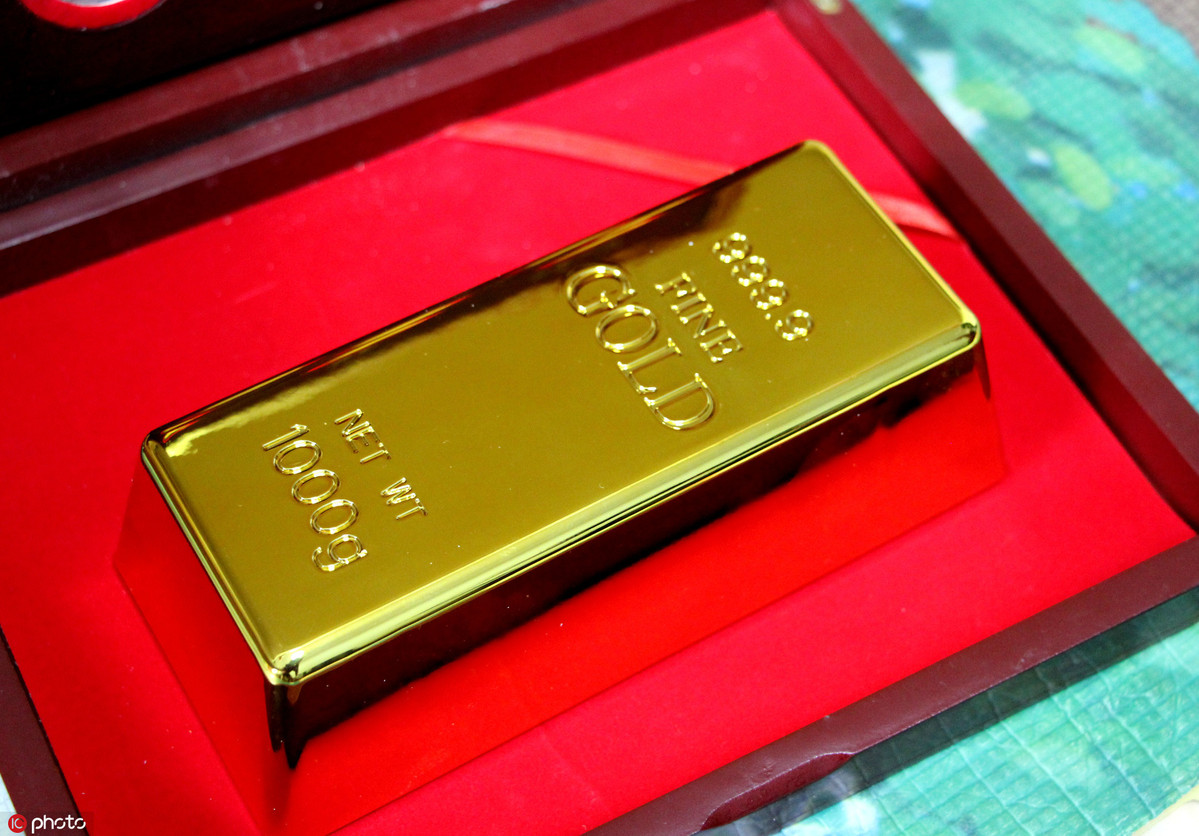Gold's bull run appears certain to continue
By Bill Condon | China Daily Global | Updated: 2019-09-25 09:19

The dramatic surge in the price of gold in recent months has pushed the price to over $1,500 per ounce, with some forecasters suggesting it will climb to over $1,600 by early 2020, if not before. This has also exceeded the market-high figure of $1,475 quoted by the London Bullion Market Association's 2019 Precious Metals Forecast Survey.
So what are the reasons behind the bull run?
Global geopolitical uncertainty, stock market volatility and a general lack of market confidence continue to drive investors toward gold, which is seen as a safe haven in troubled times. Increasing tensions between the United States and its trade partners, and the seemingly ever-present specter of higher trade tariffs are responsible for a significant negative impact on the global economy.
The uncertainty surrounding Brexit has caused political and economic turmoil in Europe. We see major economies weakening-Germany, for example-while Argentina just saw sharp falls of its currency and stock market. The increasing conflict in the Middle East and political or economic turbulence in so many areas paint a bleak economic picture.
Add to the mix the forecasts of an easing of monetary policy by the US Federal Reserve and the European Central Bank and expectations that the Bank of Japan will follow suit. This, in turn, is likely to drive emerging market central banks to implement similar measures, with the prospect of lower interest rates looming. Signals from the bond markets suggest the chances of recession are growing, further fueling the increased demand for gold.
According to the World Gold Council, the demand during the first half of this year reached a three-year high of 2,181.7 tons. The demand was primarily driven by central bank buying, which reached 374.1 tons and accounted for the largest net increase in global gold reserves since the council began compiling quarterly reports over 19 years ago.
Robust investments in exchange-traded funds, particularly in Europe, and strong growth in jewelry demand from Indian consumers resulted in gold becoming one of the best-performing asset classes during the first half of the year. This trend is likely to continue.
One of the key beneficiaries of the strong price in gold will be the mining sector, particularly the junior miners. In recent years, many junior mining and exploration companies have found it difficult to raise sufficient investment to develop new projects or advance existing ones to a bankable feasibility stage, or bring them to full production. Many of these companies remain privately owned, but the appeal of public markets too often becomes the holy grail in the belief that they will have easier access to capital.
The increasing value of the commodity makes the returns from investing in the mining sector more attractive and is bringing in much-needed capital. Returns are best viewed in medium-to long-term cycles, but investors increasingly are looking for direct access to physical gold.
The gold mining and exploration sector can be challenging, and projects are sometimes situated in locations that are geographically or geologically challenging or deemed high-risk from a political or economic perspective. It requires strong management with broad skills and local knowledge to execute in operationally difficult conditions.
The key ingredients that investors should be mindful of when evaluating an investment other than the geology are adequate funding, tight fiscal controls, strong mine development, management, operational experience and a realistic exit strategy.
In recent years, Chinese investors have been attracted to gold mining and exploration, and this is likely to continue with a more focused approach on assets located along the routes of the Belt and Road Initiative.
Any increase in gold production will not have an impact on market price and there is ultimately a limited supply of gold. However, the international pricing of gold is somewhat unclear, as it is influenced by paper-based transactions derived from spot gold trading on London's over-the-counter and gold futures trading on COMEX, the largest gold futures exchange in the world.
The physical gold bullion price is fixed by a cartel of market makers on behalf of the London Gold Bullion Market Association and "the gold fix" informally provides a recognized rate that is used as a benchmark for pricing most of the world's gold products and derivatives. It takes place daily across the US dollar, the euro and the British pound. Many believe that paperbacked gold contracts have too great an influence and can result in market manipulation.
However, with market uncertainty set to continue and further distress appearing in the currency markets, gold's bull run looks certain to continue.
The author is chairman of The Multitude Foundation, which raises awareness of contemporary culture throughout Asia. The views do not necessarily reflect those of China Daily.
























